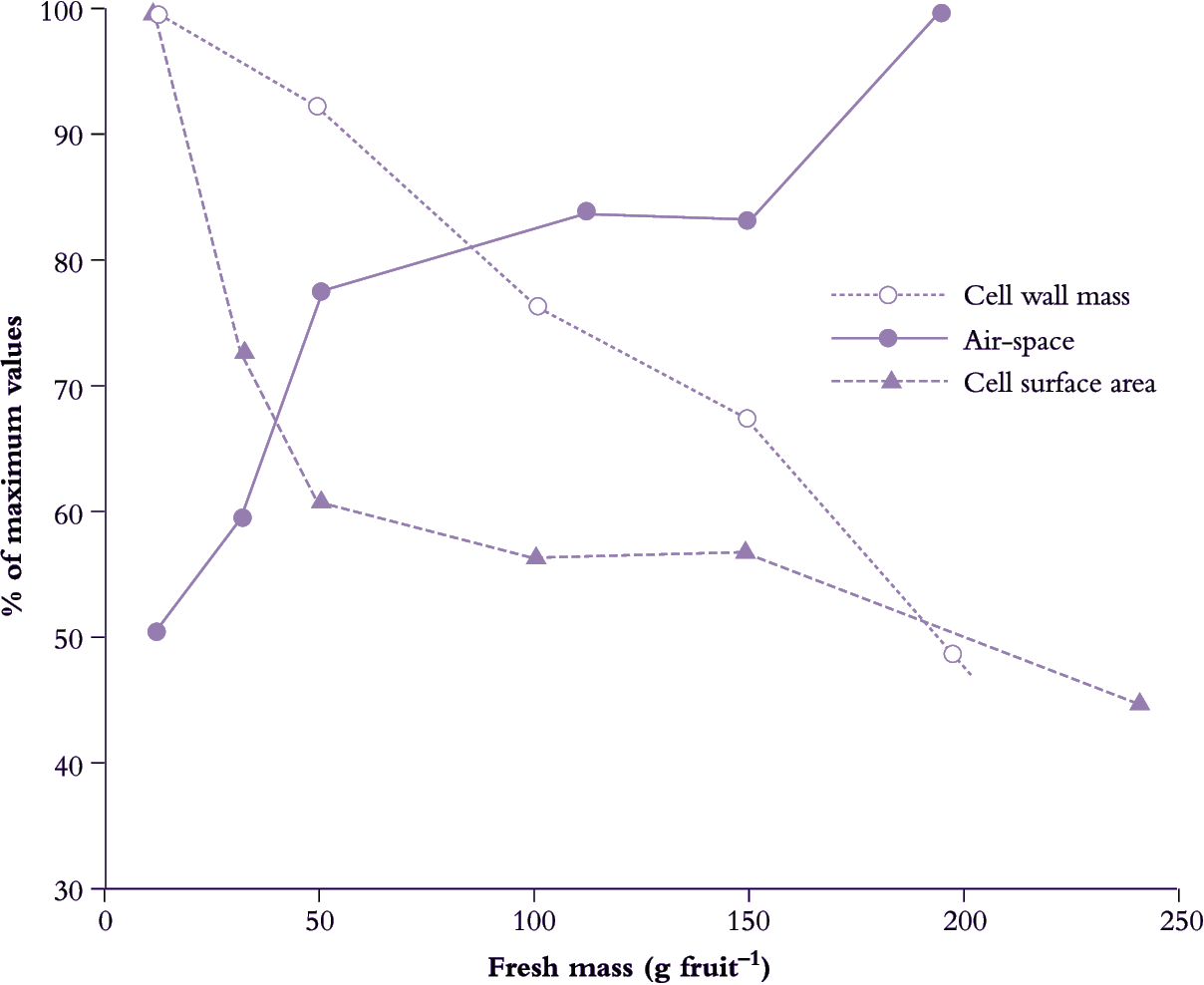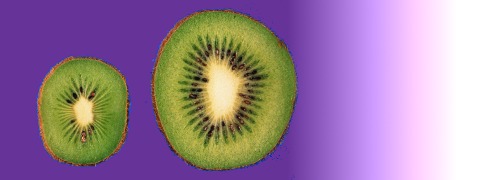Fig 11.04.png

Figure 11.4. Physical characteristics of apple fruit change during growth and development with a notable increase in gas space to a maximum of around 0.1 mL gas mL-1 tissue at maturity, and a corresponding decrease in cell wall mass to around 15 mg g-1 fresh mass. Cell surface area shows an early rapid decrease from around 340 cm2 mL-1 tissue. (Based on Harker and Ferguson (1988) Physiol. Plant. 74, 695-700)
Patterns of cell growth and differentiation in cell layers can influence the quality of mature fruit. For example, pepino fruit with a compact exocarp composed of tightly packed cells are less likely to bruise during postharvest handling than cultivars having large intercellular airspaces. As cell size increases during development, other accompanying characteristics also change, such as cell wall thickness, differentiation of specific cell types (e.g. sclereids) and the formation of cell inclusions such as oil droplets or calcium oxalate crystals (raphides). In feijoa and pear, development of sclereids in the mesocarp provides the characteristic gritty texture. As another example, juiciness of orange depends on prior differentiation of juice sacs in the endocarp.
The extent and distribution of airspaces are particularly important, affecting both fruit texture and physiological properties. For instance, in apple, airspace relative to fruit volume can double during development, while cell wall thickness and relative cell surface area both decline (Figure 11.4). Such changes affect gas exchange and diffusion of solutes through pericarp tissues due to increased tortuosity.
In kiwifruit all tissues of the mature fruit (exocarp, outer and inner pericarp and central core) are already discernable in the ovary before anthesis and pollination. Each layer grows to a different extent and at different rates, so that the relative contribution of each to the total fruit volume varies with time (Figure 11.5). Cell division ceases first in the exocarp and last in the innermost regions of the central core. The outer pericarp is first seen as a homogeneous population of cells but by c. 14 d after pollination two cell types become visible, namely small isodiametric parenchyma cells full of starch grains, and much larger heavily vacuolate ovoid cells in which the frequency of starch grains per unit volume is low.
Fruit anatomy affects our perception of fruit quality. In kiwifruit, hairs are developed as multicellular projections of the skin, giving a characteristic bristly appearance and rough feel in the case of the green flesh ‘Hayward’ or a silky, smooth appearance in the yellow flesh ‘Hort16A’ cultivar. Tough skin relative to soft flesh is another important character imparted by development of primary cell wall thickenings in the hypodermal collenchyma.

